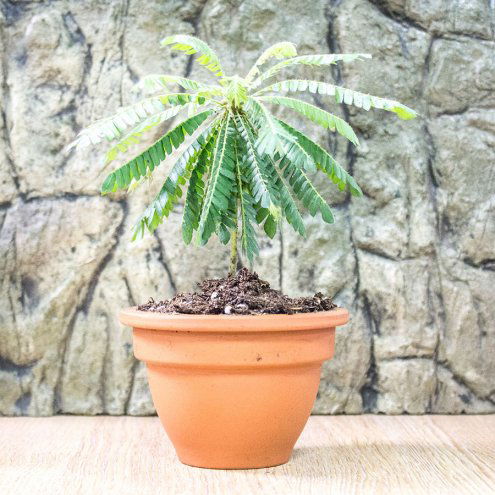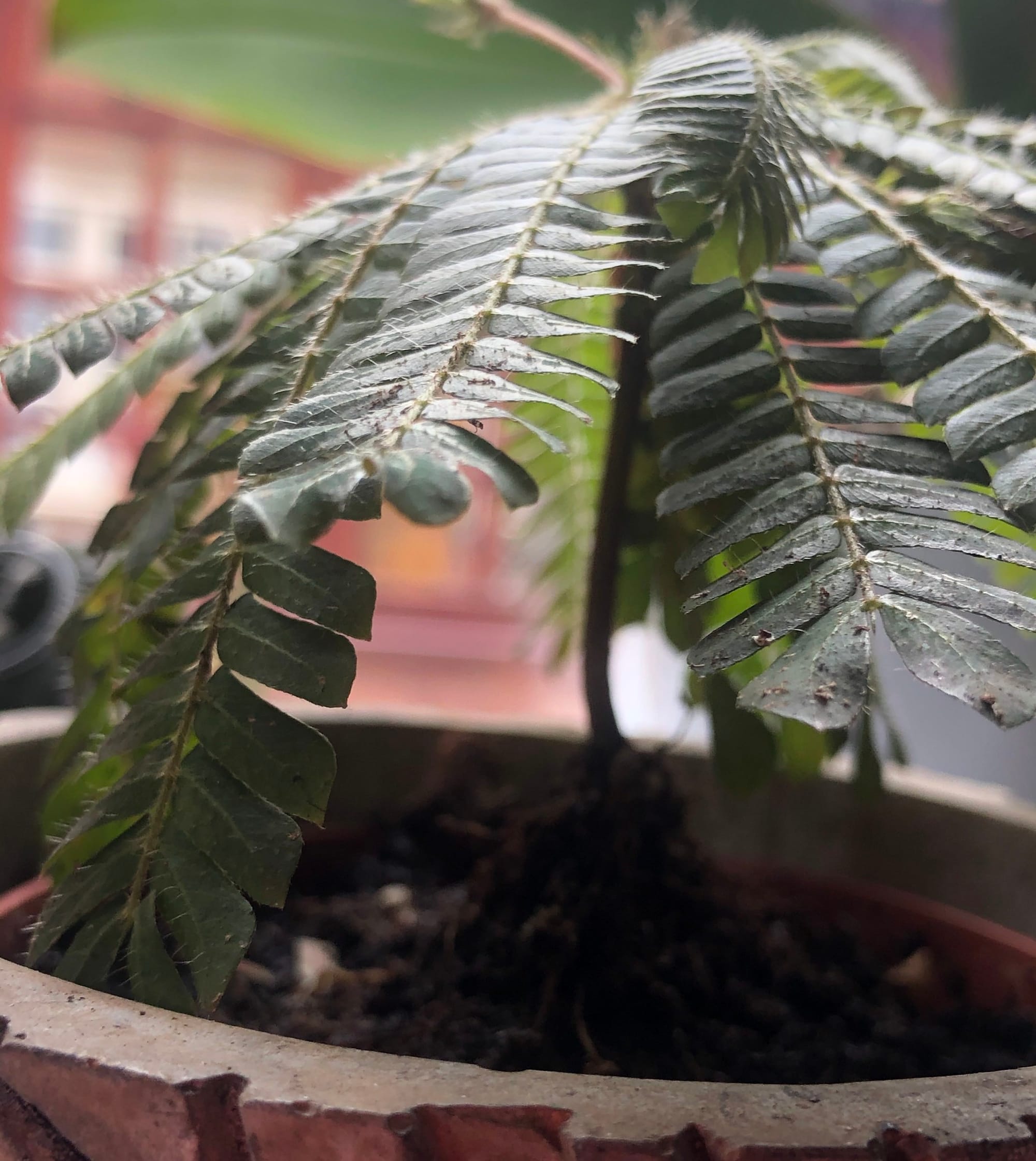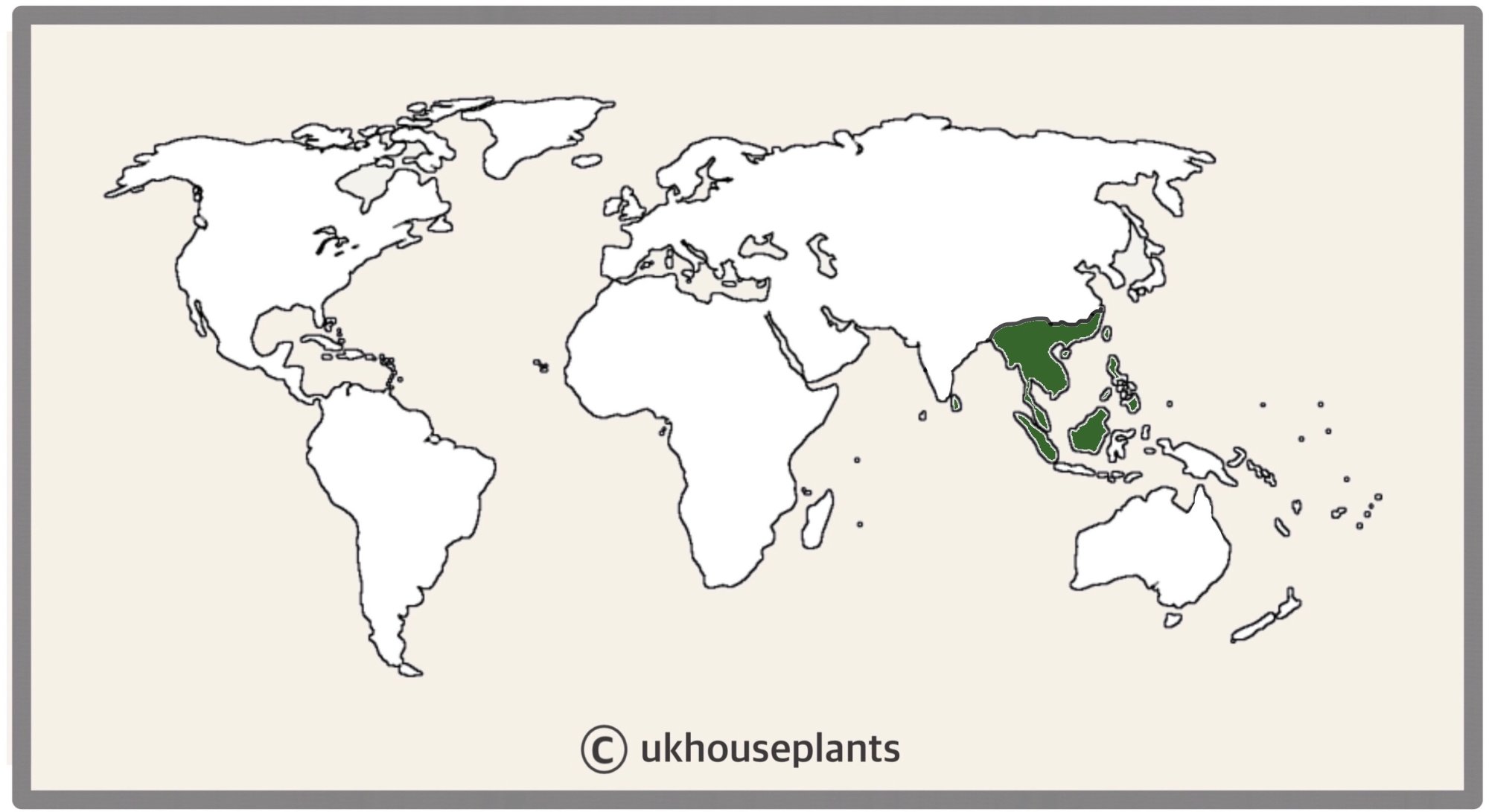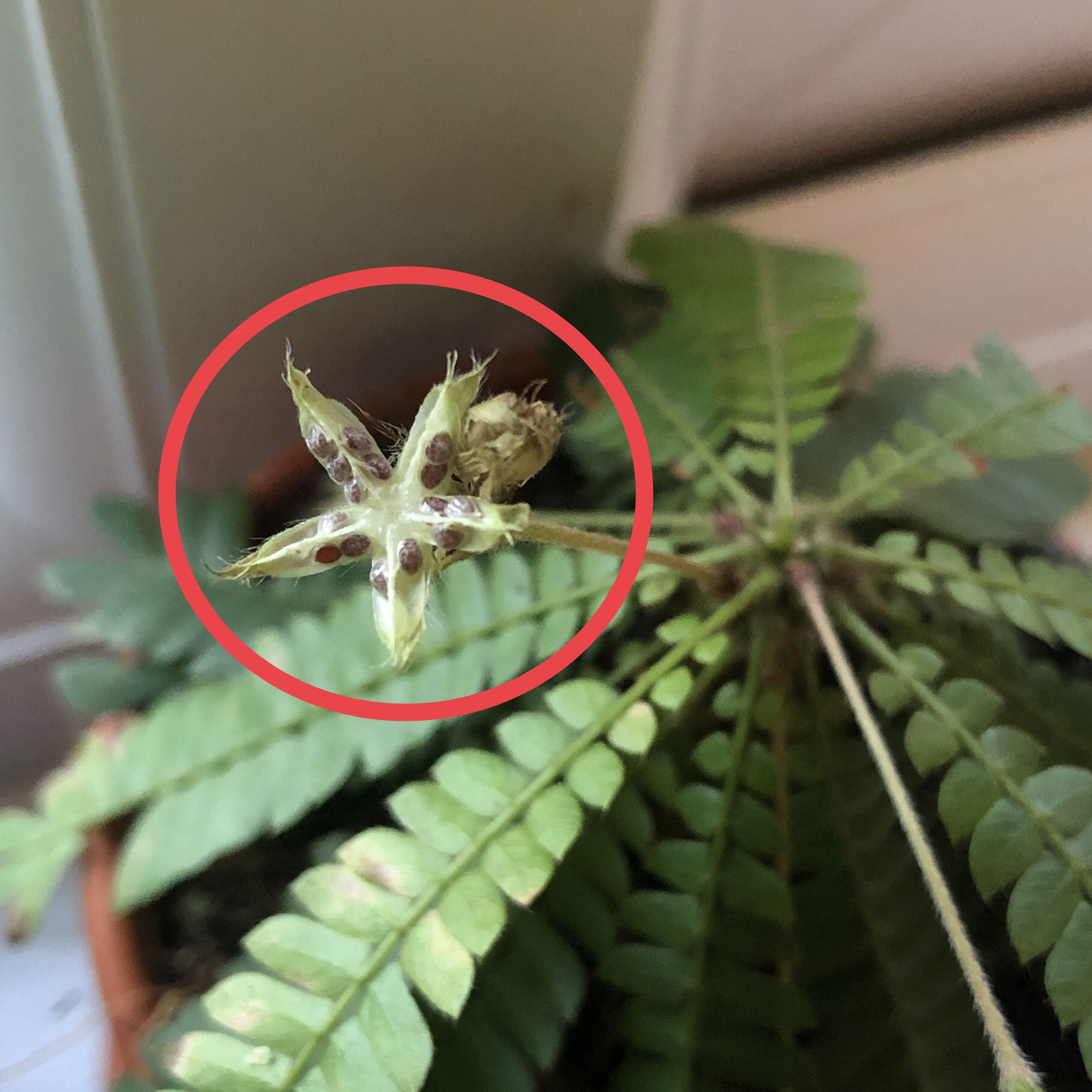
Biophytum sensitivum
Contents
- Top Tips
- Location, Water, Humidity & Fertilisation
- Additional Care & Information
- Common Issues
- Origins, Temperature, Propagation, Repotting & Toxicity.
Need the answer to a specific plant query? Book a 1-to-1 video call with THE HOUSEPLANT DOCTOR™, the website's friendly author to overcome and address your niggling problem! Available on iMessage, WhatsApp, Facebook Messenger & more.
Top Tips & Info
- Care Difficulty - Moderate
- Provide a bright, indirect location with no direct sunlight for best results. Avoid deep shade at all costs.
- Little Tree Plants are best kept in relatively moist soil due to their intolerance to long periods of droughts. Introduce a pebble tray to slow the rates of drying soil, as well as higher humidity levels.
- Fertilise using a 'Houseplant' labelled feed every four waters in the spring and summer, reducing this to every six in the colder months.
- Keep an eye out for Spider Mites & Mealybugs that'll hide in the plant's cubbyholes.
- Unfortunately, Little Tree Plants are classed as an 'Annual' by the RHS, meaning that most specimens will only last between 6 - 18 months from purchase. Those that are currently blooming are most likely to die once the flowering period is over.
 Biophytum sensitivum is part of the Oxalis family, meaning that they fold their leaves downwards when stressed and during each night. Scroll down to the following photo to see its foliage in the closed position.
Biophytum sensitivum is part of the Oxalis family, meaning that they fold their leaves downwards when stressed and during each night. Scroll down to the following photo to see its foliage in the closed position.
Location & Light - 🔸
A bright, indirect site is best for this specimen, as shady environments could lead to soil mould and slowed growth. Although the risk of sun-scorch is high with sun-filled locations, a location that offers up to an hour of morning or evening sunlight is acceptable, as long as the specimen is kept moist. Never situate this plant in all-day sunlight due to the risk of foliage decline and plant death.
Water - 🔸🔸🔸
Little Trees are best kept in reliably moist soil as inconsistent moisture levels may result in stunted, unhappy growth. Allow the compost's top third to dry out in between waters in the growing period, reducing this slightly further in the autumn and winter. Under-watering symptoms include a sudden loss of older foliage, yellowed or crispy foliage & stunted growth, whereas over-watering symptoms including a weakened or rotten stem, no new growth, yellowing lower leaves and eventual plant death. Click here to learn more about root rot and how to address it!
Humidity - 🔸
Create a humidity tray to provide a moist and stable environment for your plant. If the surrounding saturation is too low or the heat too high, its leaf-tips may start to brown over and curl, especially in direct sunlight. Gently hose the foliage down from time to time to hydrate the leaves and keep the dust levels down.
Fertilisation - 🔸🔸
Feed every four waters during the growing period and every six in the autumn and winter, using a 'Houseplant' labelled fertiliser. Never apply a 'Ready to Use’ product into the soil without a pre-water first, as it may burn the roots and lead to yellowed leaves.
As Little Trees only last a year or two, regular fertilisation is key to longer-lasting foliage, as well as better health and greener foliage.
 The closed position of a Biophytum sensitivum.
The closed position of a Biophytum sensitivum.
Additional Care & Information
It's a well-known fact that Little Trees will only last a year or two, and because of its short lifespan, a good level of care is needed for longer-lasting health. Firstly, we'd recommend providing a bright, warm location with the acceptance of up to one hour of sunlight per day. As the risk of sun-scorch is high in sun-filled areas, limiting its exposure will only wreak benefits to the plant in regards to its energy and appearance. Maintaining higher temperatures will prevent the risk of it entering its dormancy, which usually sends the plant into its decline. We'd recommend an ambient temperature of around 18℃ (64℉), in a north, east or west-facing windowsill away from nearby radiators. Keep the specimen well-fed using a 'Houseplant' labelled fertiliser, while providing near-constant soil moisture. Prune any developing flower buds to maintain higher stored energy within the plant.
After a period of a few months, your specimen will begin to decline, slowly resulting in yellowed foliage and a lack of leaf-movement. At this period, THE HOUSEPLANT DOCTOR™ would keep the plant well watered and fed, continuing to provide a bright area to lengthen its lifespan. If you've kept the flowers or seedpods attached to the plant, you may obtain the seeds and sow them next springtime to keep your collection of Little Trees alive.
Common Issues with Little Tree Plants
If you still can't find the answer to your specific houseplant problem, book a 1-to-1 video call with THE HOUSEPLANT DOCTOR™ to point you in the right direction today.
The rapid yellowing of older leaves could signify irregular watering when the specimen is subject to periods of droughts and over-watering. If the older leaves or branches become yellow and drop in quick succession, introduce a pebble tray to prolong the risk of drying soil. Not only this, but the specimen will also be able to absorb moisture through the leaves (via the stomata), thus 'levelling off' the moisture requirements. It's completely normal for the specimen to decline after six months onwards, as the plant will only live for up to eighteen months.
If your specimen is located in a dark environment with mould developing on the compost's top layer, use a chopstick to stab the soil in various areas gently. You should aim to enter the compost between the base of the plant and the pot's edge, as failure to do so may lead to damaging its lower portion. Leave the holes open for a few days before re-surfacing the soil to avoid it becoming overly dry. Not only will the gentle shift in the soil's structure mimic the work of small invertebrates in the wild (worms, etc.), but it'll also add oxygen back into the soil, thus reducing the risk of root rot. Repeat this monthly, or whenever you feel the potting-mix isn't drying out quickly enough.
Transplant shock is a big issue when it comes to heavy-handed repots. Give the plant a good soak 24hrs before the action and never tinker with the roots, unless it has been affected by root rot. Typical signs of transplant shock are largely similar to under watering, with wilting, yellowing leaves and stunted growth among the most common symptoms. Click here to learn more about addressing transplant shock and a step-by-step guide on performing the perfect transplant.
Origins
Carl Linnaeus first described the species as Oxalis sensitiva in 1753, before being replaced by Augustin Pyrame de Candolle seventy years later in Biophytum. Chemical and hormone studies has illustrated that the species has high counts of cupressuflavone and is traditionally believed to be antibacterial and anti-diabetic in humans. Biophytum comes from the Greek words for 'life' and 'plant', referring to the leaflet movement in many of its species.
 The Distribution of Biophytum sensitivum.
The Distribution of Biophytum sensitivum.
Temperature
15° - 32℃ (59° - 90℉)
H1b (Hardiness Zone 12) - Can be grown outdoors during the spring and summer in a sheltered location whilst nighttime temperatures are above 15℃ (59℉), but is fine to remain indoors, too. If you decide to bring this plant outdoors, don't allow it to endure more than an hour of direct sunlight a day as it may result in sun-scorch. Regularly keep an eye out for pests, especially when re-introducing it back indoors.
Spread
Its size will stay more or less constant throughout its eighteen-month life in your home.
Pruning & Maintenance
Remove yellow or dying leaves, and plant debris to encourage better-growing conditions. While pruning, always use clean scissors or shears to reduce the chance of bacterial and fungal diseases. Prune the flowers and developing buds to elongate the specimen's lifespan.
Propagation
Via Seed.
Seeds (Moderate) - Soak the seeds in lukewarm water for around 24hrs in a dark location, preferably on top of an operating radiator. Equally sprinkle the seeds on top of moist 'Houseplant' labelled compost, resisting the temptation to compact it. Maintain evenly moist soil and allow the excess water to freely drain from the pot's base to prevent water-logged conditions. The ideal location for successful germination is in a bright, indirect setting with temperatures above 18℃ (64℉) with bottom-heat. Keep the pot in a transparent bag to provide a stable level of humidity, along with longer-lasting soil moisture. Germination may take up to two months, so don't discard any unsuccessful seeds until this threshold has been surpassed. Remove the bag once the seedlings produce their second leaf and then split them into their own 7cm pots.
Flowers
As Little Trees are classed as an annual, they'll readily bloom in the late summer onwards. The individual flower will last several days, with the overall show lasting several weeks. They are known to be pollinated rather easily, so check for developing seeds to sow in the following spring (pictured below).
 You can collect the seeds of a Biophytum sensitive on its seedpod has opened up to grow next springtime.
You can collect the seeds of a Biophytum sensitive on its seedpod has opened up to grow next springtime.
Repotting
As your Little Tree will only last eighteen months, repotting isn't necessary. The most suitable potting mix for your Little Tree is a 'Houseplant' labelled potting mix, typically found at most garden centres or via our online soil mix shop.
Pests & Diseases
Keep an eye out for mealybugs, aphids, spider mites, scale, thrips & whitefly. Common diseases associated with this species are root rot, red leaf-spot, heart rot, botrytis & southern blight - click here to learn more about these issues.
Toxicity
This plant is classified as poisonous due to varying concentrations of oxalic acid found around its body. If parts of the plants are eaten, vomiting, nausea and a loss of appetite could occur. Consumption of large quantities must be dealt with quickly; acquire medical assistance for further information.
Retail Locations
Some physical houseplant shops may sell this plant throughout the year, most likely in the spring and summer months. Have a check online if you don't have a shop nearby.
Book a 1-to-1 Call with THE HOUSEPLANT DOCTOR™
If you need further advice with your houseplants, book an advice call with ukhouseplants' friendly and expert writer today! This can be done via a video or audio call on most apps, including Facebook, FaceTime & Skype. A ten-minute call costs £6.95 (US$8), or £15.95 for thirty minutes. You can ask multiple questions, including queries on plants, pests, terrariums, repotting advice and anything in between. Please consider supporting this service to keep ukhouseplants thriving!